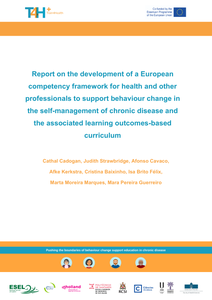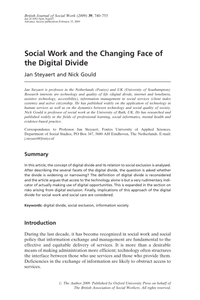Background: Alcohol use is associated with an automatic tendency to approach alcohol, and the retraining of this tendency (cognitive bias modification [CBM]) shows therapeutic promise in clinical settings. To improve access to training and to enhance participant engagement, a mobile version of alcohol avoidance training was developed.Objective: The aims of this pilot study were to assess (1) adherence to a mobile health (mHealth) app; (2) changes in weekly alcohol use from before to after training; and (3) user experience with regard to the mHealth app.Methods: A self-selected nonclinical sample of 1082 participants, who were experiencing problems associated with alcohol, signed up to use the alcohol avoidance training app Breindebaas for 3 weeks with at least two training sessions per week. In each training session, 100 pictures (50 of alcoholic beverages and 50 of nonalcoholic beverages) were presented consecutively in a random order at the center of a touchscreen. Alcoholic beverages were swiped upward (away from the body), whereas nonalcoholic beverages were swiped downward (toward the body). During approach responses, the picture size increased to mimic an approach movement, and conversely, during avoidance responses, the picture size decreased to mimic avoidance. At baseline, we assessed sociodemographic characteristics, alcohol consumption, alcohol-related problems, use of other substances, self-efficacy, and craving. After 3 weeks, 37.89% (410/1082) of the participants (posttest responders) completed an online questionnaire evaluating adherence, alcohol consumption, and user satisfaction. Three months later, 19.03% (206/1082) of the participants (follow-up responders) filled in a follow-up questionnaire examining adherence and alcohol consumption.Results: The 410 posttest responders were older, were more commonly female, and had a higher education as compared with posttest dropouts. Among those who completed the study, 79.0% (324/410) were considered adherent as they completed four or more sessions, whereas 58.0% (238/410) performed the advised six or more training sessions. The study identified a significant reduction in alcohol consumption of 7.8 units per week after 3 weeks (95% CI 6.2-9.4, P<.001; n=410) and another reduction of 6.2 units at 3 months for follow-up responders (95% CI 3.7-8.7, P<.001; n=206). Posttest responders provided positive feedback regarding the fast-working, simple, and user-friendly design of the app. Almost half of the posttest responders reported gaining more control over their alcohol use. The repetitious and nonpersonalized nature of the intervention was suggested as a point for improvement.Conclusions: This is one of the first studies to employ alcohol avoidance training in a mobile app for problem drinkers. Preliminary findings suggest that a mobile CBM app fulfils a need for problem drinkers and may contribute to a reduction in alcohol use. Replicating these findings in a controlled study is warranted.
DOCUMENT

Dit is het eindrapport van de Global mOralHealth bijeenkomst georganiseerd door de Wereldgezondheidsorganisatie (WHO) en de universiteit van Montpellier. Docent Mondzorgkunde - Janneke Scheerman en lid van het lectoraat GGZ verpleegkunde - woonde deze bijeenkomst in oktober 2018 bij en droeg bij aan het rapport: https://www.inholland.nl/nieuws/be-helthy-be-mobile/ Als vervolg op de Global mOralHealth bijeenkomst wordt het mOralHealth handboek ontwikkeld, waaraan Janneke meeschrijft. In het handboek worden de procedures voor het ontwikkelen van mOralHealth interventies beschreven.
LINK
Chronic diseases represent a significant burden for the society and health systems; addressing this burden is a key goal of the European Union policy. Health and other professionals are expected to deliver behaviour change support to persons with chronic disease. A skill gap in behaviour change support has been identified, and there is room for improvement. Train4Health is a strategic partnership involving seven European Institutions in five countries, which seeks to improve behaviour change support competencies for the self-management of chronic disease. The project envisages a continuum in behaviour change support education, in which an interprofessional competency framework, relevant for those currently practising, guides the development of a learning outcomes-based curriculum and an educational package for future professionals (today’s undergraduate students).
DOCUMENT

In deze literatuurverkenning worden de gevonden voorwaarden en condities voor het geven van online justitiële interventies1 kritisch besproken.
DOCUMENT

Introduction: Worldwide, there is an increase in the extent and severity of mental illness. Exacerbation of somatic complaints in this group of people can result in recurring ambulance and emergency department care. The care of patients with a mental dysregulation (ie, experiencing a mental health problem and disproportionate feelings like fear, anger, sadness or confusion, possibly with associated behaviours) can be complex and challenging in the emergency care context, possibly evoking a wide variety of feelings, ranging from worry or pity to annoyance and frustration in emergency care staff members. This in return may lead to stigma towards patients with a mental dysregulation seeking emergency care. Interventions have been developed impacting attitude and behaviour and minimising stigma held by healthcare professionals. However, these interventions are not explicitly aimed at the emergency care context nor do these represent perspectives of healthcare professionals working within this context. Therefore, the aim of the proposed review is to gain insight into interventions targeting healthcare professionals, which minimise stigma including beliefs, attitudes and behaviour towards patients with a mental dysregulation within the emergency care context. Methods and analysis: The protocol for a systematic integrative review is presented, using the Preferred Reporting Items for Systematic Review and Meta-Analysis Protocols recommendations. A systematic search was performed on 13 July 2023. Study selection and data extraction will be performed by two independent reviewers. In each step, an expert with lived experience will comment on process and results. Software applications RefWorks-ProQuest, Rayyan and ATLAS.ti will be used to enhance the quality of the review and transparency of process and results. Ethics and dissemination: No ethical approval or safety considerations are required for this review. The proposed review will be submitted to a relevant international journal. Results will be presented at relevant medical scientific conferences.
LINK
Dit wetenschappelijk artikel beschrijft het protocol van de GET READY studie. Deze studie is ontwikkeld voor mensen die een angststoornis of depressie hebben gehad, en dient als terugvalpreventie interventie. De interventie bestaat uit online modules, monitoring en contacten met een POH-GGZ. De achtergrond van terugvalpreventie wordt toegelicht, de methoden van de studie worden gedetailleerd beschreven en er wordt vooruit gekeken naar hoe deze studie een bijdrage kan leveren in het veld van terugvalpreventie.
DOCUMENT

Urban tourism increasingly focuses on the role of hospitality in cities, evolving from a means to strengthen tourism as a ‘product’, towards a focus on tourism as an opportunity for revitalization and transformation of destinations. In this context, cities are considered dynamic communities in which ‘hosts’ (entrepreneurs, residents, municipalities) and ‘guests’ (visitors, tourists) co-habitate and co-create multisensorial experiences. This shift in focus comes hand in hand with increasing awareness of competitiveness and sustainability of destinations, expressed by a harmonious relationship between city residents and visitors and a balanced usage of the city as a shared resource. This is of great importance, given the intense usage of urban spaces – the city center of Amsterdam being an illustrative example – and the multiple purposes that these spaces represent for different stakeholders. This paper presents the outcome of a review study into city hospitality experience indicators. We integrate these indicators as a basis for the development of a new scale for measuring the effectiveness of hospitality interventions in relation to outcome variables such as satisfaction and net promotor score (NPS). We thereby provide an important means for scholars and practitioners to develop sustainable tourism actions inclusive of local community interests, in support of efforts toward more balanced city experiences among all stakeholders.
DOCUMENT

Prehabilitation trajectories contribute to improving lifestyle choices and influencing risk factors to reduce postoperative complications, the overall hospital stay and lower health care costs. This paper gives an overview of the best current evidence on the role, scope, added value and expertise of nurses during the prehabilitation trajectory of patients with GI cancer, consisting of relevant nursing diagnosis, interventions and outcomes within four specific domains. The methods used are literature searches that were performed between June 2022 and January 2023, with a final search on January 25th. The search strategy included four steps, following the Joanna Briggs Institute Manual. Two researchers contributed to the study selection process. The results were categorized according to the domains of multimodal prehabilitation. The Handbook of Carpenito was used to link the results to nursing diagnoses, interventions and nurse sensitive outcomes.
DOCUMENT

Dit artikel gaat in op de zogenaamde digitale kloof en beschrijft hoe met de verandering van die digitale kloof ook de bijhorende sociale interventies moeten wijzigen.
DOCUMENT

the role of higher education in fostering young professionals’ global competence
DOCUMENT
